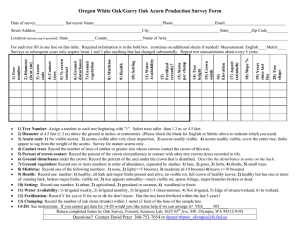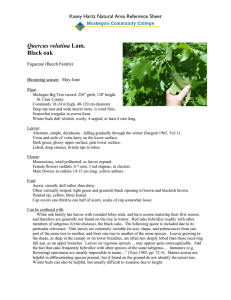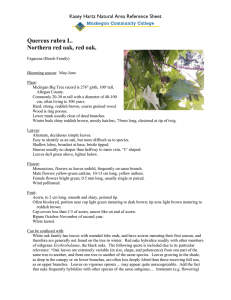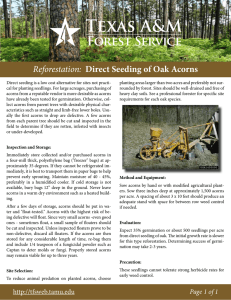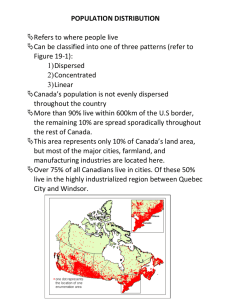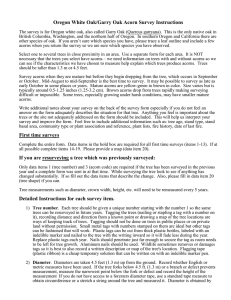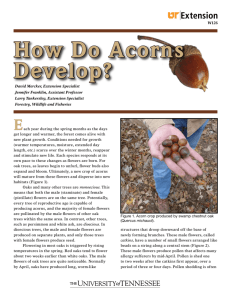Information about Oak data
advertisement
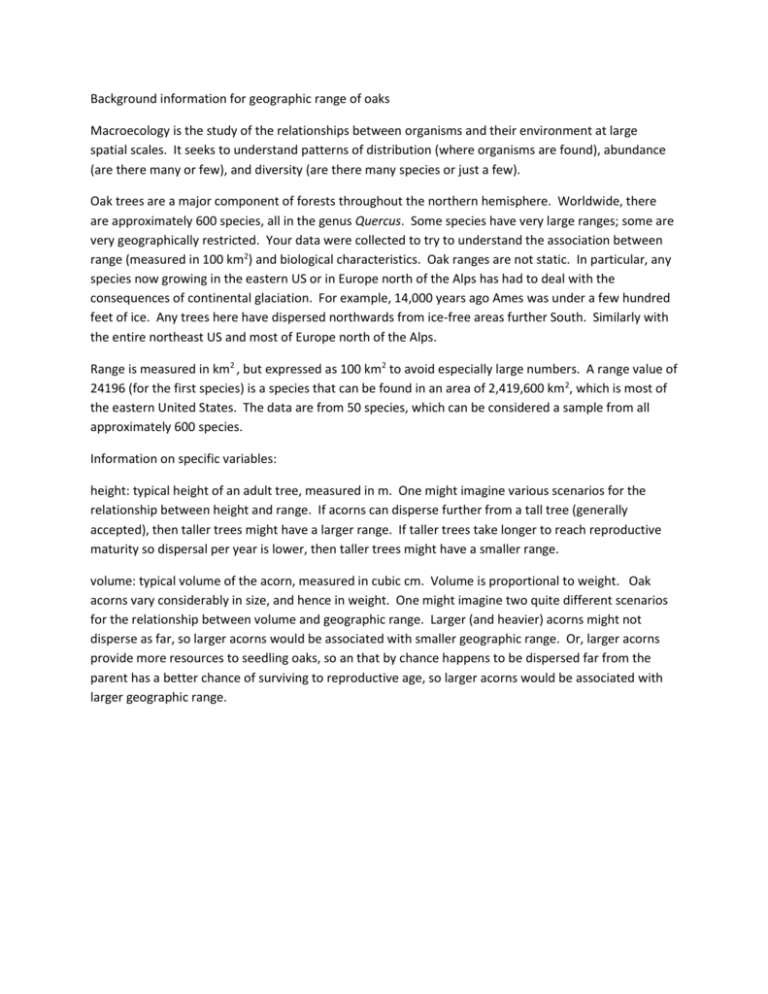
Background information for geographic range of oaks Macroecology is the study of the relationships between organisms and their environment at large spatial scales. It seeks to understand patterns of distribution (where organisms are found), abundance (are there many or few), and diversity (are there many species or just a few). Oak trees are a major component of forests throughout the northern hemisphere. Worldwide, there are approximately 600 species, all in the genus Quercus. Some species have very large ranges; some are very geographically restricted. Your data were collected to try to understand the association between range (measured in 100 km2) and biological characteristics. Oak ranges are not static. In particular, any species now growing in the eastern US or in Europe north of the Alps has had to deal with the consequences of continental glaciation. For example, 14,000 years ago Ames was under a few hundred feet of ice. Any trees here have dispersed northwards from ice-free areas further South. Similarly with the entire northeast US and most of Europe north of the Alps. Range is measured in km2 , but expressed as 100 km2 to avoid especially large numbers. A range value of 24196 (for the first species) is a species that can be found in an area of 2,419,600 km2, which is most of the eastern United States. The data are from 50 species, which can be considered a sample from all approximately 600 species. Information on specific variables: height: typical height of an adult tree, measured in m. One might imagine various scenarios for the relationship between height and range. If acorns can disperse further from a tall tree (generally accepted), then taller trees might have a larger range. If taller trees take longer to reach reproductive maturity so dispersal per year is lower, then taller trees might have a smaller range. volume: typical volume of the acorn, measured in cubic cm. Volume is proportional to weight. Oak acorns vary considerably in size, and hence in weight. One might imagine two quite different scenarios for the relationship between volume and geographic range. Larger (and heavier) acorns might not disperse as far, so larger acorns would be associated with smaller geographic range. Or, larger acorns provide more resources to seedling oaks, so an that by chance happens to be dispersed far from the parent has a better chance of surviving to reproductive age, so larger acorns would be associated with larger geographic range.

